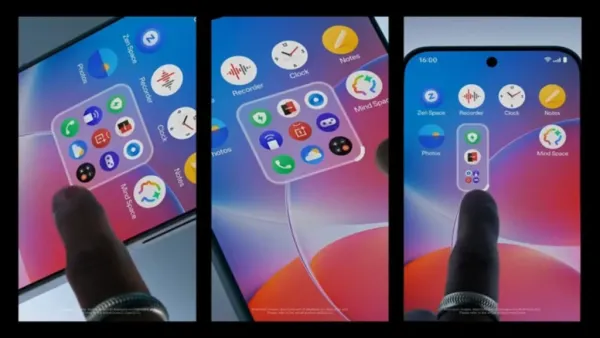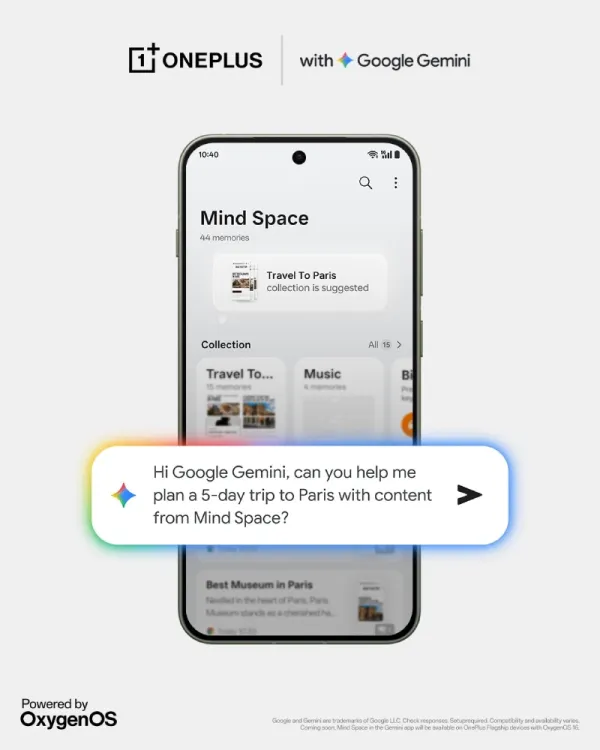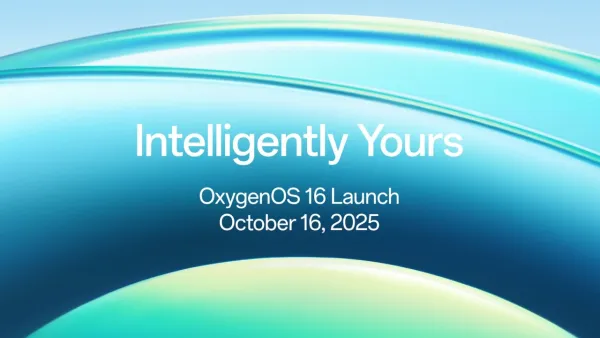
Highlight
- AI-Powered Upgrade: OxygenOS 16 brings deep AI integration for smarter multitasking, improved voice recognition, and seamless productivity.
- Next-Level Customization: New dynamic wallpapers, Always-On Display options, and refined UI with smoother animations and adaptive layouts.
- Enhanced Privacy & Performance: Stronger app permissions, AI-tuned system optimization, and improved battery management for a faster, safer experience.
Officially expected to launch on October 16, 2025, OxygenOS 16 marks OnePlus’s biggest software leap yet. Based on Android 16, the update combines OnePlus’s clean, fast interface with AI-driven intelligence, enhanced customization options, and stronger privacy controls.

Teased on OnePlus India’s official X (Twitter) handle, this release signals a more seamless, efficient, and personalized smartphone experience for OnePlus users worldwide.
What’s New in OxygenOS 16
OxygenOS 16 uses the same open, near-stock Android improvement process; however, AI is deeply woven throughout the system. Users can expect:
OxygenOS intelligently suggests applications, offers enhanced voice recognition, and provides greater contextual assistance to simplify multitasking and daily productivity, working faster and more intuitively.
There will be additional themes and dynamic wallpaper options, along with an entirely new design philosophy called Always-On Display (AOD) to allow users to provide their own personality to their device.
- Stronger Permission Controls
Building on Android 16’s privacy layer, OnePlus introduces advanced background process management. Users gain granular control over which apps access data or run in the background – ensuring tighter security and transparency.
Users can look forward to enhanced animations, smoother transitions, and AI-tuned RAM and CPU management, resulting in improved gaming performance and fluid multitasking. OxygenOS 16 maintains OnePlus’s reputation for speed and responsiveness.

The device-specific optimization will offer better management methodologies of the user’s inputs and analysis of battery usage to optimize the overall performance of the device without hindering functionality.
User Interface Adjustments and Design Enhancements
OnePlus directed significant attention to enhancing the user interface.
- Smoother animations to the UI and refined motion effects
- Unified iconography and adaptive layouts that align with Android 16’s Material You evolution
- Minor Settings and Notification Panel redesigns for more straightforward navigation
- Enhanced haptics and gesture feedback for a more tactile experience
Device Support and Roll-Out Timeline
As stated in OnePlus’s community announcement, the launch date of October 16 will initiate the rollout, not the worldwide release. Roll-outs will take place incrementally and in regions, starting with India, as the majority of beta testing was conducted in that market.
Supported Devices:
Flagship Series: OnePlus 11, 11R, 12, 12R, Open, 13, 13R, 13s, and 15
Nord Series: North 3, North 4, North 5
Nord CE Series: North CE4, CE4 Lite, CE5
Pad Series: OnePlus Pad, Pad 2, Pad 3

Unconfirmed Devices:
OnePlus 13S: Closed Beta in progress
OnePlus Pad 3 / Pad Lite: Awaiting confirmation
OnePlus N30 SE: Conflicting rollout information
Devices Not Supported:
Older flagship devices, such as the OnePlus 10 (10 Pro, 10T, and 10R ) series, along with any model below those, the Nord 1, 2, and CE3 series, plus N series devices like N20, N30, N100, and Pad Go, will not receive OxygenOS 16.
Why Some Users May Get It Later
OxygenOS 16 is rolling out via a phased Over-The-Air (OTA) update. Therefore, not all devices will receive OxygenOS 16 at the same time. Some targeted early devices are simply the first shipments that OnePlus can monitor for performance and/or address any issues. We highly recommend that you and your users wait instead of manually sideloading the update, as this may risk issues.
What’s Gone or Changed
Some older features – such as some legacy UI tools and redundant styling customization options – have been removed to increase performance and improve visual consistency with Android 16. You may disappoint a small number of existing users, but these changes are intended to lighten and smooth out the overall software experience that OnePlus can provide.

Pros and Cons of OxygenOS 16
Pros
- Better AI integration and improved performance.
- Smoother UI fluidity and better visual synchronicity.
- Faster updates with better Android 16 optimizations.
- Enhanced effort on Privacy and Security.
Cons
- Slow rollout may irritate users who are waiting for the OTA rolling updates.
- Older devices are not officially supported.
- Some additive customization tools were stripped away for performance reasons.
Final Take: A Good Step Forward

OxygenOS 16 feels like a confident and good upgrade, not a revolutionary update. It maintained OnePlus’s clean and fast DNA, while adding important AI and design improvements. If you’re running a recent flagship like a OnePlus 12 or 13 series device, this will make your daily experience smoother, smarter, and more efficient. As it begins to roll out post-October 16, 2025, OnePlus Owners await a faster, smarter, more minimalistic future that blends a balance like never before.
-
How poor sleep makes the brain grow older faster

-
NPCI Announces Four New UPI Launches During GFF Day 2

-
Jammu & Kashmir News: Massive Search Operation Launched In Kokernag To Trace 2 Missing Soldiers

-
Amit Shah congratulates Maharashtra on Navi Mumbai Airport, metro line inauguration

-
CBI conducts nationwide searches in digital arrest case under Operation Chakra-V
